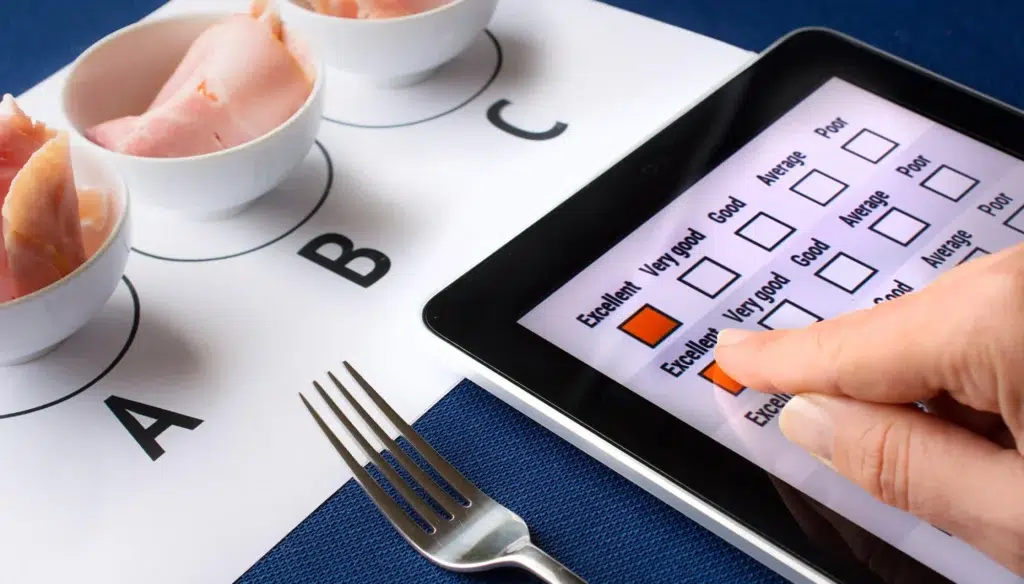Designing a sensory quality program improves the product’s appeal. How will you ensure that the program you design will maintain the sensory attributes that enhance the quality of your brand? You will learn to design an effective sensory quality control program.
A sensory quality control program identifies product properties like texture, flavour, and aroma to meet consumer demand. By testing the characteristics, data is collected from consumers and trained panels to identify real issues for further improvement. This will help you choose accurate processes and tools and set your objectives.
1. Company Culture and Commitment to Quality
Designing a sensory quality control program initiates with the commitment of the company to quality. If the company has established a priority of high standards characteristics, then commitment will impact the company culture. Quality culture helps a company to provide excellent services and products. It can be done by education of all employees. Effective and satisfied quality properties of company culture are:

- Customer assurance and quality
- End-to-end professionalism
- Proper management
- Continuous feedback
- Testing the product
Establishing a quality culture takes time and continuous effort at all program levels. Leaders, employees, and HR should understand the value of commitment and initial efforts to earn customer loyalty and increase the organization’s reputation.
2. Establishing a Sensory Quality Control Program
Clear your objectives and goals to establish a sensory quality program. Quality standards are set based on consumer demand. Evaluate the sensory attributes by establishing a standardized procedure and environment. Implement corrective actions to prevent sensory quality issues. Products made with prioritized sensory quality control will meet consumer demand and satisfaction.
2.1 Critical Elements of the Sensory Quality Control Program
Key elements of a quality control program involve several steps:

- Evaluate the sensory attributes of food like texture, flavour and smell.
- Establish an expert and trained assessment panel to conduct the evaluation.
- Standardized methods for sensory evaluation are preparing the samples, presenting them, and assessing them for accuracy and consistency.
- Controlled environment to conduct sensory evaluation
- Provide education and Training to the panel for good evaluation skills.
- Conduct regular evaluation testing of samples for the quality product.
- After analyzing data, implement corrective actions to solve any identified issues.
- Ensure quality maintenance to deliver value products.
2.2 Overview of Approaches used to Define Sensory Target
Identifying food product sensory quality control programs involves evaluating sensory characteristics to meet consumer satisfaction. Approaches used to define sensory targets are market research, competitive benchmarking, and consumer feedback. These approaches can help design an effective quality control program for high-quality products.
Market research is done by conducting service, focusing on age groups and their demands, and gathering feedback from the target market to identify food’s sensory characteristics. It also collects past product performance and customer feedback to understand trends and preferences.
Consult food scientists and technologists for recommendations based on expertise. Stay updated with Regular feedback from stakeholders and consumers to ensure that products align with consumer expectations.
3. Management and Selection of Staff for Sensory Quality Control
How will you ensure that the sensory quality team performs well? A well-trained and expert team can evaluate and solve potential issues to deliver a valuable product to the market. You should hire, train, and motivate the quality team using a strategic approach.
Let’s explore selecting and training the staff for consistent best product delivery.

3.1 Personnel Required for Sensory Quality Control
Staff selection and management are essential for the sensory quality control program. It requires experienced and trained staff. Personnel for the program are:
- Sensory scientist
- Quality control technician
- Trained panelists
To set up the quality control program, hire individuals from departments or externals who are highly interested in sensory evaluation. Provide Training to ensure the panel is consistent with the program. Perform regular calibration sessions to align the staff evaluation with set standards.
3.2 Setting up the Quality Control Panel
Setting up the quality control panel for a sensory quality program involves several steps:

- Set your objectives
Know about the goal and purpose of the quality control panel.
- Selecting members of the panel
Select the member who takes a strategic approach to the evaluation. These individuals can be industry experts, trained sensory analysts, or consumers.
- Staff training
Provide Training to members on the methods, evaluation and scales of the analysis process.
- Standardized protocols
Standardized protocols of process for sensory evaluation include setting up optimal temperature and conditions.
- Data Analysis
Collect the data from evaluation and perform analysis to identify trends and deviations from the standard.
- Reviews and feedback
Give feedback to panel members about their evaluation and performance. This will help improve the quality of the product.
- Quality system integration
The quality control panel integrates with the company’s quality system to enhance product efficiency and quality.
3.3 Maintaining the Quality Control Panel: Performance, Motivation & Size
Maintaining the quality control panel by improving performance and motivation. Monitor the performance of panellist members regularly through feedback sessions and tests. It will help to identify areas where further Training is required.
Provide opportunities and incentives to professional panelists to keep them motivated. Panel size should be according to your company’s product. It requires more coordination and resources. More complex products in the company will require a larger panel.
4. Proficiency Testing of Sensory Panels
Sensory panels ensure consistency and product quality in industries like food and beverages or cosmetics. How will we know that the panel is working accurately? This is a guide to testing the panel’s proficiency. This proficiency test helps to validate the panel’s performance and evaluation.
4.1 Design & Implementation of Proficiency Testing
The proficiency test evaluates the performance of the panel and individual panelists. It will help to evaluate consistency and accuracy.
Design an effective proficiency test to understand the evaluation of sensory characteristics. This will help you design appropriate tests with standardized conditions and build potential evaluation criteria.
Then, perform the test with optimal conditions, starting with preparing samples and providing clear instructions.
The frequency of proficiency tests will depend on the following factors:
- Complexity of products
- Panelists experience
4.2 Panels
It involves the steps:

- Selection of panel
- Calibration and Training
- Type of sensory panels
- Maintaining panel performance
4.3 Analysis of Data/Validation of Results
Sensory evaluation involves performing the proficiency test, analyzing the data, and validating the result.
Collect the data from the panelist and ensure consistency in gathering data.
Statistical methods are used in data analysis to measure reliability, variability, and central tendency. Analysis of variance (ANOVA) evaluates the difference between panelists. Always calibrate the results by comparing them with standards.
4.4 Panel Performance
Panel performance is evaluated by monitoring the panelists. It includes performance metrics like sensitivity, consistency, and accuracy. Check the performance reviews regularly and discuss them with the panelists. Then, use these results reviews to establish goals. Encourage panelists to engage in learning and get feedback for continuous improvements.
5. Conclusion
Designing a sensory quality control program involves planning staff selection and proficiency testing. You need to focus on the main goals and objectives using standardized evaluation conditions for Training.
This enhances the customer’s loyalty and trust in the company. All these implemented practices lead to a quality company culture. Don’t miss out on the latest trends and technologies in the food industry; your gateway to high-quality products awaits at Grubiie.

